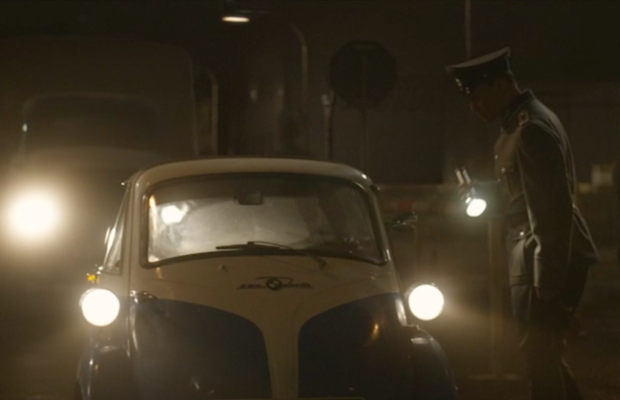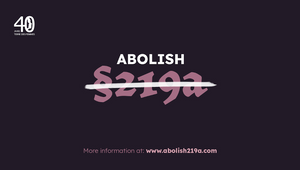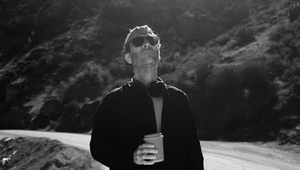
Your Shot: BMW’s Remarkable Tale of ‘The Small Escape’ from East to West Berlin

In 1964 Berlin was a divided city. The Berlin Wall, laden with guard towers and the infamous stretch of no man's land known as the 'death strip', marked one of the most heavily guarded borders in modern history. Despite the risk, many still attempted to cross the border. There are stories of elaborate attempts involving forged identity, tunnels and even hot-air balloons, but one of the most common forms of escape was hiding inside cars that were crossing through one of the few official checkpoints along the wall. By 1964 though, vehicle crossings were becoming subject to heavier and heavier checks, and it was becoming more difficult to stow away escapees.
Enter the BMW Isetta, a tiny 13-horsepower, single-cylinder car that launched in 1955. It could barely fit two people in at all - let alone someone hidden away from guards painstakingly inspecting the vehicle. At least, that's what you - and said guards - would expect. Nevertheless, in 1964, West Berliner Klaus-Günter Jacobi pulled off the genius feat of turning his Isetta into an escape vehicle to get an old friend out of life in Soviet-run East Germany (you can learn more about how he pulled it off here).
Anyway, this incredible story is the inspiration behind a remarkable new short film for BMW, devised by Jung von Matt and directed by Tempomedia's Alex Feil. LBB's Addison Capper chatted with Alex about the process of bringing such a story to life - a process which, it seems, was worthy of the story at hand.
Check out that, and the film, below.
LBB> Was the story of Klaus-Günter Jacobi something you were aware of prior to this job? Tell me more!
Alex> Well, to start with… no one knew the story of Klaus-Günther Jacobi. Jacobi wasn't mentioned anywhere… In the agency board there was a man named ‘Horst Breistoffer’ mentioned, based on the only information you could find online (which turned out to be false). When you make a film based on a true story, you have to be 100% right. Otherwise it’ll end up very embarrassing. So when the agency approached me with the idea, I wanted to know every little detail.
Tempomedia Germany gave me three assistants just to research all the facts. A gazillion phone calls, emails and interviews later, the team traced what really happened to its source.
While working on another project, I travelled to Berlin to meet Klaus-Günther Jacobi in person long before we got the job. Klaus-Günther is such a nice person and we had coffee and cake in his apartment. And that is actually where it all started and I suppose that is how we got the job because with the help of my amazing Tempomedia team, I knew every little detail about the Isetta, the hideout and Mr. Jacobi.
BTW: it is important for me to point out that the film is not 100% his story (as put in some articles) - it is just based on his idea to smuggle people in the small Isetta. He was able to do it only once because his vehicle needed to renew the registration. Sure enough a vehicle without a gasoline tank would not pass the inspection. That is why he had to dump the hero vehicle, but was an example for many others after him. And to be 100% correct, nobody knows exactly how many successful escapes with an Isetta there were, because not every successful escape was documented.

LBB> What were you thinking when this script came in?
Alex> I live in Los Angeles. That is not very far from the Mexican border. What most people don’t know is that almost 50% of the people who live here are Latino or Hispanic. I have Mexican friends whose family was divided by the new rules of our crazy POTUS. People who pay taxes, have jobs and are socially 100% integrated were sent back to Mexico.
Mr. Trump's idea of the wall is just crazy and I can not believe that us humans just can not learn from history. From the first second I was enthusiastic to contribute at least a little bit and remind especially younger people how crazy and cruel a wall is.
LBB> How did you approach the film from the off? What were your main aims? It really feels like an intense film trailer.
Alex> The basic story was very well laid out by David Leinweber (creative director, JvM) and Thim Wagner (ECD, JvM). The only thing I added was the dream in the opening because I wanted to point out the danger and the risks right in the beginning of the film to set the tone.
I mean, when you came near to the border back in those days, it was always a question of life and death. To have this feeling throughout the entire film was very important for me. To structure an online film is very important because people decide themselves if they want to watch it or not. So for every single second of film, I try to think about why this second is worth watching.
LBB> Speaking of film trailer - this could make an amazing film! Maybe a side project for you to work on…?
Alex> BMW is a great client and I would say the leader when it comes to branded entertainment. They started it with the Clive Owen ‘The Hire’ films in the olden days of the internet.
… and I am sure there is more to come, especially with platforms like Netflix, Hulu, etc. who are desperately in need for good content.
Stay tuned.
LBB> With that in mind, how did you find the challenge of fitting so much into a short film?
Alex> Just thank my editor, Iain Whitewright (Whitehouse London). Haha. But seriously he just has the gift to provide the film with the information needed and scratch redundant things.
LBB> You mentioned that you met Klaus, but what was that experience like and how did it inform your approach to the final film? What kind of stories did he have to tell?
Alex> Hm... Most of it is in my answer before. I have also talked to a woman who actually did not want to open this dark chapter in her life again. I had to be very sensitive here. When I interviewed her, her voice became breathy and I felt the pain coming back.
Just imagine to get smuggled, your body tightly squished for an hour. She told me about her burn wounds because her body was pressed against the engine. She could not see anything, but only hear the guards talking and the guards were only an inch away from her face, just separated by the thin metal of the Isetta. Breathing right next to the engine was very hard and a single cough could cost your life.
We had to stop the interview, but just her narration laid out the part at the border crossing. Unfortunately the film only scratches the surface of the pain and the psychological stress, the escapees had to go through.
LBB> What were your main aims and ambitions with the aesthetic of the film? It's all quite neutral apart from the pop of the car colour.
Alex> At a very early stage I was talking to Khalid Mohatseb (DOP) about the look and the colours. Khalid is incredible (not only) in his pre-production. I don’t know any other DOP with such a huge library of references to talk about.
The BMW Isetta is one the best examples for the West German economic miracle back in the ‘60s. There is only one scene in the film where we see West Berlin. It’s the only scene with many colours - the rest is quite pale. That is what Khalid and I wanted right from the first moment, definitely inspired by reality.
I will never forget the moment when I traveled to the GDR as a kid. It felt to me as someone had just sucked out the colour of everything. Besides that our briefing to Andrew Francis (colourist, Technicolor) was for the film to feel dark and heavy, heavy as the burden of the death stripe. Only the Isetta as the innocent and underestimated hero should bring some positivity (and colour) into the frame.
Phil Kay, the composer, got the same briefing. I think he composed seven different versions over seven nights, before he got to this great ‘dark scum version’ as we call it.
LBB> How did you find the challenge of recreating ‘60s Berlin? Did you get the opportunity to actually shoot in Berlin at all? How did you make this work? And how was it with regards to wardrobe and such?
Alex> When I got the script, I thought, this has to be shot in Berlin. Haha, the only scene we ended up shooting in Berlin, was the museum which is 100% real.
The rest was shot in Budapest. First we thought Budapest is a perfect choice because there are parts in the city which still look like Berlin 60 years ago. It is a beautiful city. But because of upcoming elections the city did not allow us to block any public street. We ended up shooting on a parking lot.
Quite frankly, the pre-production was a nightmare. There was a rumour of another escapee story to be released October 3rd, Germany's Independence Day. Our film was supposed to premiere November 9th which is the 30th anniversary of the wall fall. But we did not want to risk to be just a copy of another film, so we all decided to come out October 2nd. Oh my god. We cut the post production from six weeks to two weeks and had no location that looked somehow close to Berlin or the death strip.
Thanks to the patience and genius of Erwin Prib, our production designer, who constantly calmed me down and photoshopped locations into Berlin places of the ‘60s. Although it was not budgeted to have so much production design, he found creative ways to make it happen. Some locations were just finished five minutes before we started shooting.
He called for many favours… I vividly remember sitting next to him in the production van when he tried to convince one guy in Dresden, Germany, 450 miles away, to bring the period correct street lights to our set.
My unstoppable producer, Birgit Damen, who sat on the other side of me, tried to find money in her budget excel sheet to make it happen.
To be period correct, Sosa Juristovszky, our wardrobe designer, gathered all clothes in Hungary, Italy and Germany and worked closely with a historian.
LBB> What were the biggest challenges and how did you overcome them?
Alex> The time pressure was definitely the biggest challenge. I mentioned the two weeks for post production already. The post production team (spellwork.de) worked night and day to finish the film just right in time. The death strip and all backgrounds at the border checkpoint are 100% CGI. I am still speechless.
LBB> Any parting thoughts?
Alex> Overall I think there was a force that just wanted to make this film happen. Only our passion and the film’s strong message to remind ourselves that freedom can’t be taken for granted pushed us all forward.
The film can just take a small part, but when people, even companies, start taking responsibility, we are part of a movement in the right direction.










